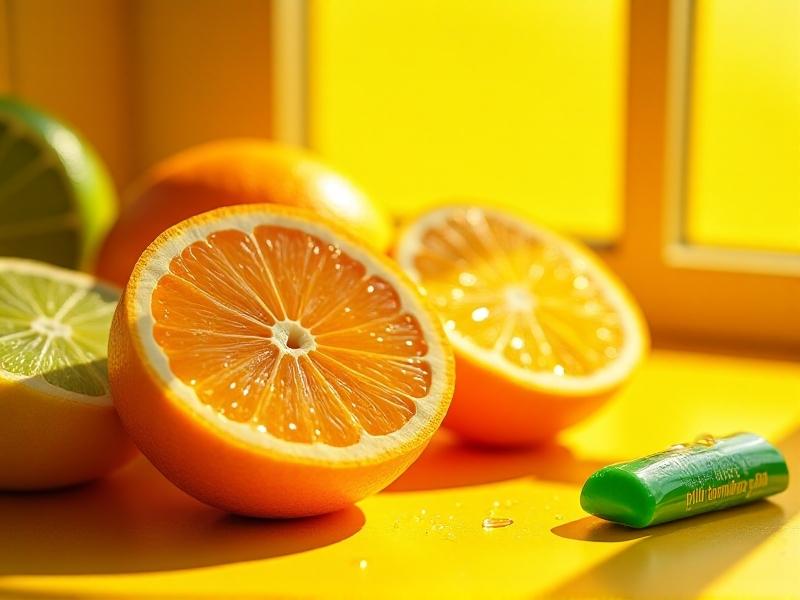Strategic Chewing Gum Flavors for Alertness
The Science of Flavor and Alertness
Chewing gum has long been associated with freshening breath, but its potential to enhance mental alertness is rooted in neuroscience. When you chew, the act itself stimulates blood flow to the brain, while flavor compounds interact with taste receptors linked to cognitive arousal. Peppermint, for example, contains menthol, which activates TRPM8 receptors in the mouth—a pathway connected to the brain’s thalamus, a region responsible for regulating attention. Research from Cardiff University found that peppermint aroma improved memory and alertness by up to 25% in participants. Similarly, citrus flavors trigger the release of norepinephrine, a neurotransmitter that sharpens focus. These biological mechanisms make certain gum flavors strategic tools for combating mental fatigue.

Peppermint: The Classic Stimulant
Peppermint gum is a staple for alertness, and for good reason. Its invigorating coolness doesn’t just wake up the mouth—it activates the brain’s anterior cingulate cortex, a region tied to decision-making and focus. A study in the International Journal of Neuroscience showed that participants chewing peppermint gum demonstrated faster reaction times during cognitive tests compared to those with unflavored gum. The secret lies in menthol’s dual role: it stimulates the trigeminal nerve, which sends alertness signals to the brain, while its sharp aroma clears nasal passages, improving oxygen intake. For high-pressure situations like exams or late-night drives, peppermint’s crisp profile offers a reliable mental boost.

Citrus Burst: Zesty Revival for Mental Fatigue
When midday drowsiness hits, citrus-flavored gum provides a tangy antidote. Lemon, orange, and grapefruit contain terpenes like limonene, which interact with serotonin receptors to elevate mood and reduce stress. A Japanese study found that subjects exposed to citrus scents experienced a 40% reduction in cortisol levels, alongside improved concentration. The acidity in citrus flavors also stimulates saliva production, combating dry mouth—a common side effect of prolonged focus. For creative tasks requiring both energy and a positive mindset, a burst of citrus can reset mental clarity without the jitters associated with caffeine.

Cinnamon Spice: Igniting Cognitive Fire
Cinnamon’s warm, pungent flavor isn’t just for lattes—it’s a stealthy cognitive enhancer. The spice contains cinnamaldehyde, a compound that increases cerebral blood flow by dilating blood vessels. Researchers at Wheeling Jesuit University observed that cinnamon gum improved participants’ performance in memory and visual-motor tasks by 15%. Its slight bite also triggers a mild stress response, releasing adrenaline to sharpen focus. Unlike sweet flavors that can lead to energy crashes, cinnamon offers sustained alertness, making it ideal for long meetings or study sessions.

The Bitter Edge: Coffee and Dark Chocolate Flavors
Bitterness, often an acquired taste, packs a nootropic punch. Coffee-flavored gum delivers caffeine’s perks without the beverage’s acidity, while dark chocolate’s theobromine enhances dopamine production. A trial in Appetite journal noted that bitter flavors increased alpha brain waves, associated with relaxed alertness—perfect for tasks requiring calm concentration. Bitterness also slows chewing speed, prolonging the stimulant effect. For professionals juggling back-to-back calls, these complex flavors provide steady, jitter-free energy.
Cold vs. Warm: Temperature's Role in Alertness
Flavors that mimic temperature extremes—like icy menthol or fiery ginger—hijack the brain’s thermal sensors to boost vigilance. A 2021 study in Chemical Senses revealed that cooling flavors increased alertness during repetitive tasks, while warming spices like ginger improved problem-solving. This dichotomy allows users to tailor gum choices to their tasks: reach for menthol during monotonous work and ginger when brainstorming. The contrast also prevents flavor fatigue, keeping the brain engaged through sensory novelty.
Timing Your Chewing: When to Pop a Piece
Strategic gum-chewing maximizes its alertness benefits. Morning sessions pair well with citrus or coffee flavors to simulate breakfast’s awakening ritual. Post-lunch slumps call for cinnamon’s metabolic kick, while late-night work benefits from peppermint’s sinus-clearing zing. Limit chewing to 20-minute intervals—prolonged jaw movement can cause fatigue. Pairing gum with hydration enhances its effects; a sip of water reactivates flavor compounds, giving your brain a second wave of stimulation.
Custom Blends: Crafting Your Alertness Protocol
Why settle for single flavors when blends can target specific needs? Mix peppermint with lemon for exam cramming (cooling + mood boost), or cinnamon and coffee for all-nighters (metabolic + caffeine-like focus). DIY enthusiasts can add food-grade essential oils to unscented gum bases—think rosemary for memory or matcha for calm energy. Apps like FlavorWiki now offer personalized gum recommendations based on circadian rhythms, proving alertness optimization is both art and science.







